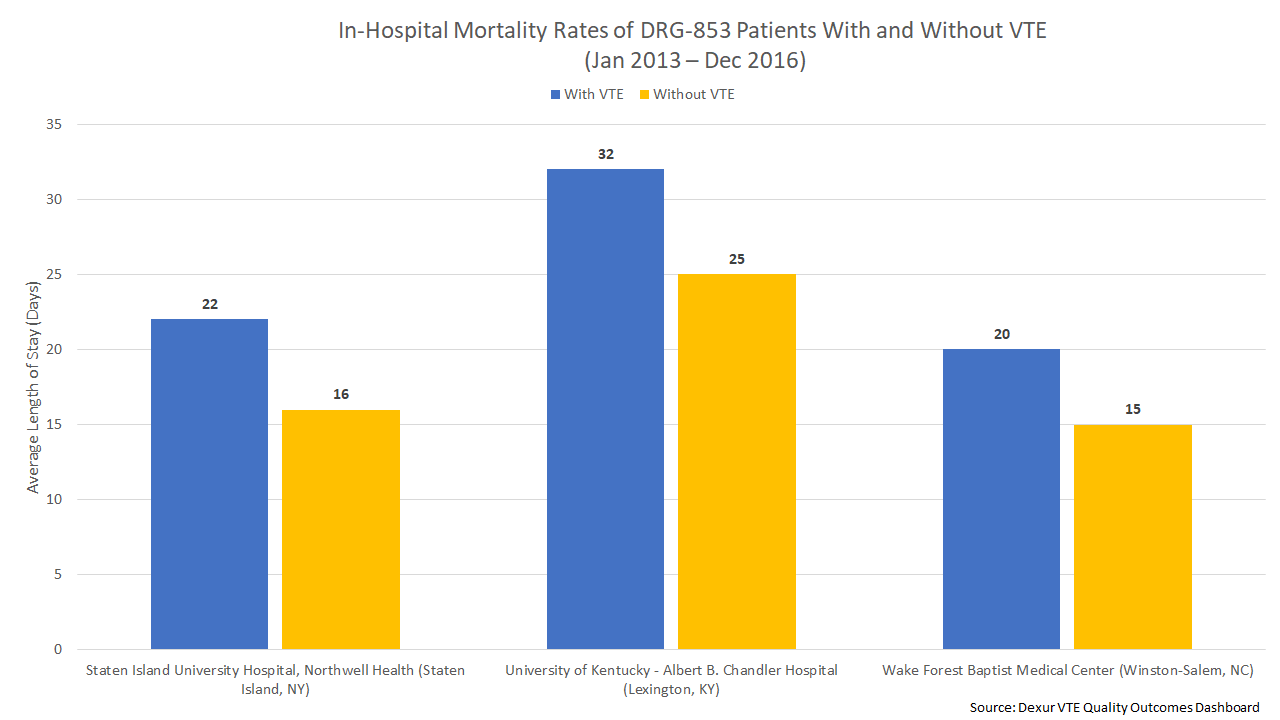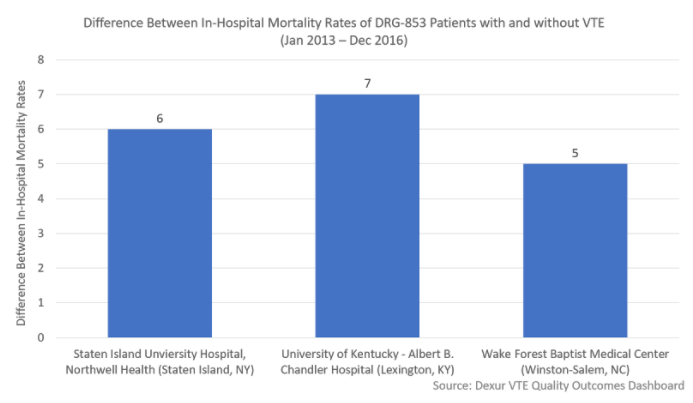Ekos System May Impact Mortality Rates of Infectious Disease Patients with VTE
In Ekos, Venous Thromboembolism (VTE)
Get Dexur’s Personalized Hospital Specific Presentation on Quality, Safety, Compliance & Education
By: Saparja Nag Apr. 24, 2018
The EkoSonic™ Endovascular system, produced by EKOS of BTG Interventional Medicine, is an innovative treatment for venous thromboembolism (VTE). It combines ultrasound technology and traditional thrombolytic medicines to more efficiently dissolve blood clots. More information as to how this unique system works can be found in a previous article about EKOS. One of the most prevalent comorbidities of VTE is infectious disease, as they share similar pathways of coagulation, inflammatory processes, and fibrinolysis processes. In infectious disease, these biological responses are caused both by the pathogens themselves and by the immune system’s response. Inflammation’s effects on hemostasis can often lead to thrombosis, presenting a serious risk for patients with infections.
To better understand the relationship between infectious disease and VTE in patients, Dexur analysts studied in-hospital mortality rates of patients with both conditions. Analysts used CMS Medicare claims data to calculate mortality rates for DRG-853 (Infectious & Parasitic Diseases with O.R. Procedures with MCC) patients with VTE and DRG-853 patients without VTE. Each hospital’s exact in-hospital mortality rates for DRG-853 patients with and without VTE reflect the patient population’s general health, while the difference between rates can be used to compare hospitals that serve populations with different general health.


The three hospitals studied were Staten Island University Hospital in Staten Island, NY, University of Kentucky - Albert B. Chandler Hospital in Lexington, KY, and Wake Forest Baptist Medical Center in Winston-Salem, NC. Staten Island University Hospital DRG-853 patients with VTE had an average mortality rate of 22%, while patients without VTE had a 16% mortality rate for a difference of 6%. The difference was slightly higher at UK - Albert B. Chandler Hospital at 7%, with a 25% mortality rate for DRG-853 patients without VTE and 32% mortality rate for such patients with VTE. DRG-853 patients at Wake Forest Baptist Medical Center had a mortality rate of 15% without VTE, which rose to 20% with VTE for a difference of 5%. These consistent differences in mortality rates for DRG-853 patients with and without VTE show a potential target population for VTE intervention options. Their risk of thrombosis is amplified by internal inflammation due to the infection, and by reduced mobility as they recover from an O.R. procedure causing acute venous stasis, which in turn may trigger VTE. These findings suggest that infectious disease patients may be excellent candidates for VTE treatment via the EkoSonic™ system.
DEXUR PRO MEMBERS GET ACCESS TO:
- DRG-853 discharge volume, overall mortality rates, mortality rates with VTE, mortality rates without VTE, and difference in mortality rate for Staten Island University Hospital, University of Kentucky - Albert B. Chandler Hospital, and Wake Forest Baptist Medical Center
- Difference in mortality rates of DRG-853 patients with and without VTE for respective states (NY, KY, NC) and nation
ABOUT THE AUTHOR
